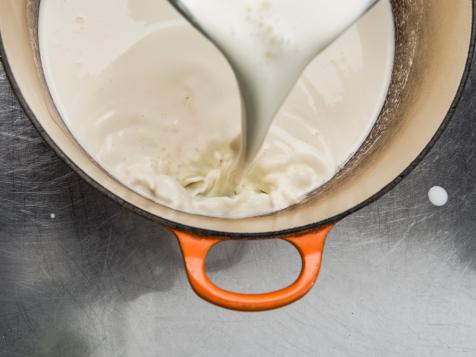Exploring Scalded Milk: A Simple Technique for Enhancing Recipes
Scalded milk is a culinary technique that involves heating milk to just below its boiling point. This process helps to kill any potentially harmful bacteria present in the milk and also alters the protein structure, resulting in improved texture and flavor in certain recipes. In this article, we'll explore how to scald milk properly and the benefits it brings to your cooking and baking endeavors.
How to Make Scalded Milk
Step 1: Choose Your Milk
- Select the type of milk you wish to scald. Whole milk is commonly used, but you can also use skim milk or any alternative milk such as almond or soy milk.
Step 2: Heat the Milk
-
Pour the Milk: Pour the desired amount of milk into a clean, heavy-bottomed saucepan.
-
Heat Over Medium-Low Heat: Place the saucepan over medium-low heat on the stovetop.
-
Stir Occasionally: As the milk heats up, gently stir it occasionally to prevent scorching and ensure even heating.

how do you make scalded milk
Step 3: Monitor the Temperature
-
Use a Thermometer: Attach a kitchen thermometer to the side of the saucepan to monitor the temperature of the milk.
-
Watch for Steam: Keep a close eye on the milk as it heats up. Small bubbles will start to form around the edges of the saucepan, and steam will begin to rise from the surface.
-
Check Temperature: Once the milk reaches a temperature between 180°F to 200°F (82°C to 93°C), it is considered scalded. Be careful not to let it boil, as this can change the texture and flavor of the milk.
Step 4: Remove from Heat and Cool
-
Remove from Heat: Once the milk is properly scalded, immediately remove the saucepan from the heat source to prevent it from boiling.
-
Cool Before Using: Allow the scalded milk to cool slightly before using it in your recipe. You can transfer it to a heatproof container and place it in the refrigerator to cool completely if necessary.

how do you make scalded milk
Benefits of Scalded Milk
- Improved Texture: Scalded milk helps to denature the proteins in the milk, resulting in a smoother and creamier texture in recipes such as custards, puddings, and certain baked goods.
- Enhanced Flavor: Heating the milk enhances its flavor profile, adding depth and richness to dishes.
- Food Safety: Scalding milk kills any harmful bacteria present, making it safer to consume, especially in recipes that call for uncooked milk.
Conclusion
Scalded milk is a simple yet valuable technique that can elevate the texture and flavor of your favorite recipes. By following these easy steps, you can scald milk properly and reap the benefits it brings to your cooking and baking endeavors. Whether you're making creamy custards, silky puddings, or fluffy pancakes, scalded milk is sure to become a staple in your kitchen repertoire.